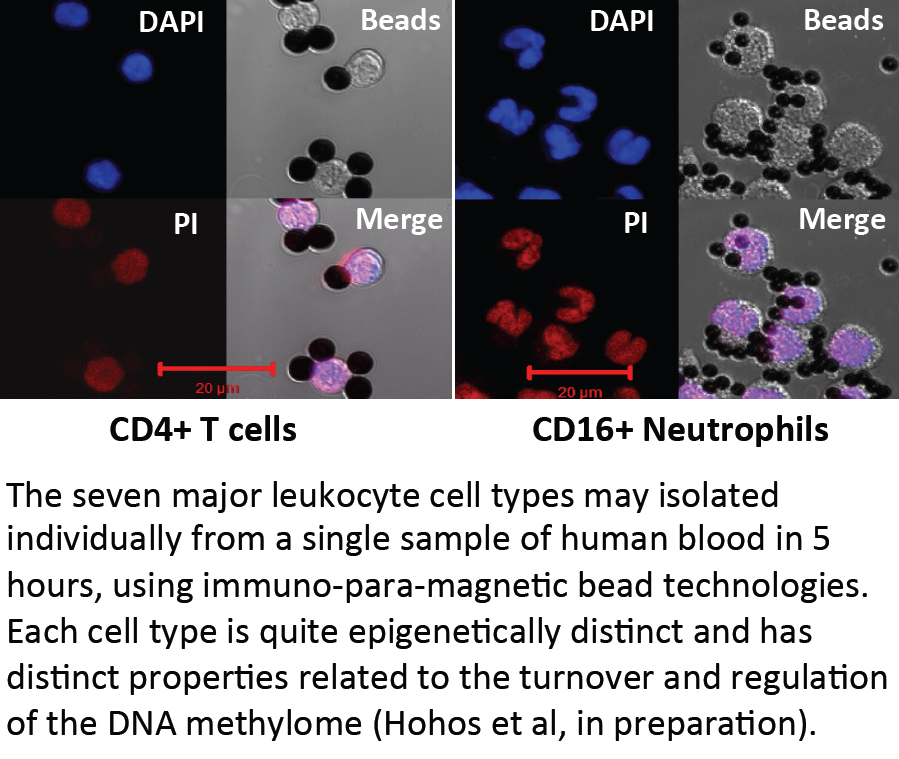Peripheral blood leukocytes
Leukocytes in peripheral blood and bone marrow are examples of the most easily enriched cell types. For at least three reasons, peripheral blood leukocytes (e.g., T cells, neutrophils) are the most common cell type used as a reporter of a person’s epigenetic status and epigenome induced risk of disease. First, leukocytes the record the systemic health of the individual, because they are in contact with and exchange signals with all the peripheral tissues via their receptors for various cytokines, adipokines, neurokines, hepatokines, etc. Second, taking blood from patients is the least invasive way to sample their tissues. Third, leukocyte cells types are already dissociated from each other in blood and are easily purified. For example, immuno-paramagnetic beads (IMB) or fluorescence activated cell sorting (FACS) may be used to enrich individual leukocyte cell types (e.g., CD4+ and CD8+ T cells, neutrophils) from blood.
We have improved these methods such that the isolation of all seven cell types may be purified from a single sample of fresh or frozen human blood in a few hours (Hohos et al., in preparation). Various leukocytes have extremely different epitypes even though they are all descended from the same hemopoietic stem cell precursors and are more or less epigenetically responsive to health status. One project in our lab explores the turnover of methylcytosine and hydroxymethylcytosine in various leukocyte cell types as a possible clue to which may be the most responsive to the peripheral blood environment and an individual’s health status.

